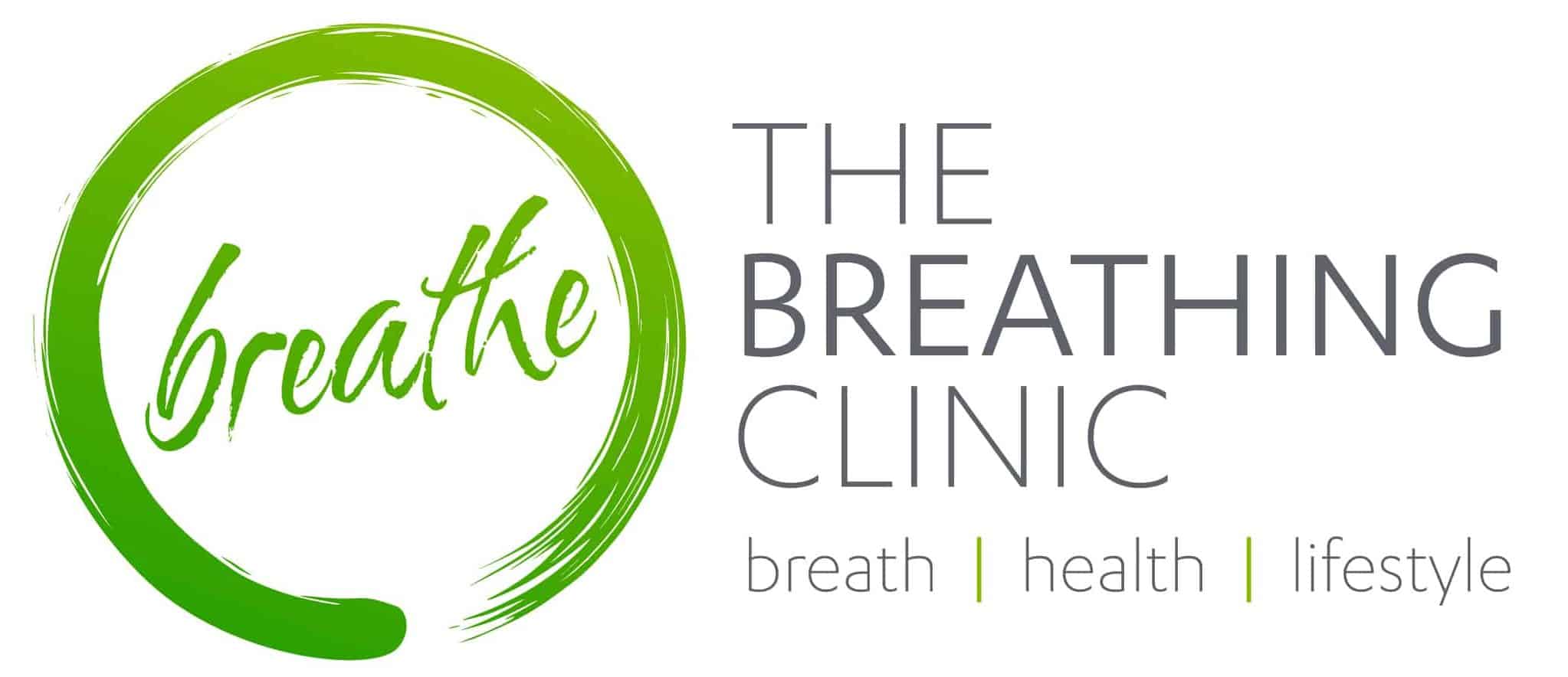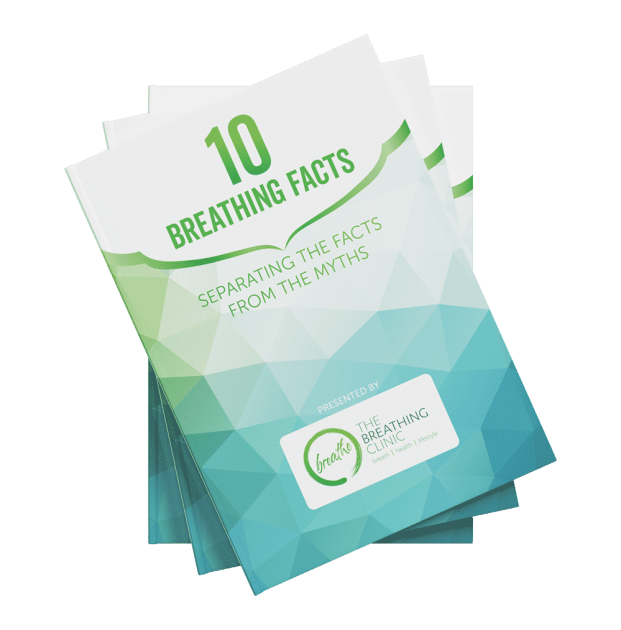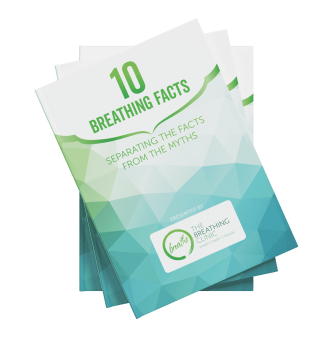As the Assistant Director General of the World Health Organization (WHO) urges people to ‘Get educated’ (1), to stop the spread of the deadly new Wuhan flu, breathing expert Patrick McKeown explores the research behind the powerful anti-viral properties of nasal nitric oxide. This article explores the potential relationship between nasal breathing and COVID-19, focusing on the role of nitric oxide in respiratory health.
Patrick McKeown, BA, MA, Dip BM (Prof. K. P. Buteyko), FBPI is President of Buteyko Professionals International, a member of the Management Board and the Advisory Faculty of the International Academy of Breathing & Health.
He writes:
- The mechanism of Covid-19 remains unknown and it is not known whether breathing through the nose can inhibit this virus.
- However, it is logical to breathe only through the nose given that the primary defense to airborne viruses is in the nose and not the mouth, that breathing through the nose can support the body’s natural resistance to infection.
- Breathe through your nose, especially in public places — on public transport, while exercising at the gym, etc.
- While in public places, slow down your breathing and deliberately reduce the volume of air taken into your lungs.
- Be aware of your breath hold time during rest. During a head cold, lower respiratory tract infection or respiratory symptoms, breath hold time during rest is reduced. To test, exhale through nose, hold breath and time how long it takes for you to experience first definite desire to breathe. If it is less than 10 seconds, respiration is not optimal.
Nasal Breathing and COVID-19: Understanding the Spread of Infection
While the spread of a new killer virus seems ultimately terrifying, this is not the first time a new respiratory illness has hit the headlines. One positive outcome of this is that much relevant research already exists. Scientists have previously highlighted the importance of nasal breathing in preventing the spread of infections, indicating that where facemasks fail, the nose may provide a natural filter for dangerous pathogens. It is relatively obvious that the nose filters, warms and humidifies air on its way into the body, whereas mouth breathing does not, but there is more to the nose than you might realise.
How this relates to Covid-19
Covid-19 is a new disease, and very little direct research is currently available about its development. However, studies have been published on similar illnesses, which may be significant. One key paper from 2005, published shortly after the outbreak of Severe Acute Respiratory Syndrome Coronavirus (SARS) reported that nitric oxide inhibits the replication cycle of the virus (7).
Although the total number of deaths relating to Covid-19 has now exceeded those recorded during the 2002/2003 SARS epidemic, the current mortality rate is still much lower than that of SARS, which killed 9.6 percent of those infected (6). While the link between nasal breathing and COVID-19 is not yet fully understood, research on similar viruses suggests potential benefits.
Covid-19 versus flu
Many people have been asking why coronavirus is being seen as so much more serious than the annual outbreak of influenza. In simple terms, Covid-19 behaves very differently from flu, and it’s much less well understood. It has a very high viral load, and where flu results in a crippled immune system, this new virus attacks a very specific type of cell called a type 2 pneumocyte (19,20).
How Covid-19 affects the body
Type 2 pneumocytes are responsible for the production and secretion of a molecule called surfactant, which reduces the surface tension of fluid in the lungs and contributes to the elastic properties of the alveoli. It facilitates oxygen transport to the blood, and prevents lung collapse and edema. Now imagine this function is compromised and it begins to make sense why coronavirus can be deadly for even a young, healthy person, and why it can cause damage to organs including the heart.
The anti-viral effect of nitric oxide (NO)
In lab tests using Vero E6 cells, the authors of the 2005 study found that NO has an antiviral effect, specifically inhibiting the replication of the virus during early stages of infection. Their research showed that NO inhibits viral protein and RNA synthesis – essential stages of viral reproduction in SARS.
How NO works
NO is produced in the paranasal sinuses — a group of 4 air-filled spaces that surround the nasal cavity. This means that by breathing through the nose, we harness various properties of NO including its pathogen-killing powers (8). NO is understood to be a vasodilator — it plays a role in the dilation of the blood vessels in the lungs so that oxygen can be properly absorbed from the air.
But according to a 1999 paper by scientists Lundberg and Weitzberg, another biological function of NO is the effect it has on the growth of various pathogens, including viruses. What this tells us is that NO in the nasal airways could represent an important first line of defense against infection. The existence of NO in exhaled air was first discovered in 1991 (8). Later studies clearly demonstrated that almost all of this NO originates in the upper airways, with only minor input from the lower respiratory tract and lungs.
Nitric oxide (NO), which is inhaled in large quantities during nostril breathing, has also been proven to be important for its role in surfactant production (21,22). It controls production of surfactants by the alveolar cells and preserves surfactant function — an ability that is used in clinical settings to treat premature infants (23).
2009 study into the impact of NO
A paper published in 2009 by the scientists responsible for the research into the SARS virus, states that: ‘NO is involved in local host defense in the upper airways.’
The research, which also used isolated laboratory cells, suggests that while it is unclear whether NO acts directly on microorganisms or if it works in combination with other components to produce its toxic impact, it may help to keep the sinuses sterile. Indeed, it is possible that very low levels of nasal nitric oxide in patients with cystic fibrosis or Karagener’s syndrome may contribute to their increased susceptibility to respiratory infections. Interestingly, the study found that NO inhibits the replication of SARS in 2 distinct ways (9).
2013 study into flu and nasal breathing
A 2013 study called Evidence for the Cure of Flu through Nose Breathing is equally affirmative, stating that nasal breathing is helpful for patients with flu (10). The paper explains nasal NO is harnessed during nose breathing, and that since NO has been proven to destroy influenza viruses, inhibiting the early stages of their replication cycle, NO can kill the flu virus and therefore provide a ‘cure (9).
This is consistent with research from 1999 and 2000 that found NO has ‘opposing effects’ (11) in viral infections including flu and pneumonia and that it inhibits the replication of a variety of viruses (12).
And research into the human rhinovirus (HRV), the primary cause of the common cold, concluded that humans actually produce more NO in response to HRV infection, theorising that the gas plays a key role in viral clearance (13). Without the regular inhalation and exhalation through the nostrils, nitric oxide in the nasal airways goes unused; therefore the simplest way to naturally increase NO is by nostril breathing.
Humming and NO
However, evidence suggests that humming is effective in emptying the paranasal sinuses of accumulated NO, leading to far greater production of the gas (14).
Studies show humming increases NO
A 2005 review of nasal NO, health and disease, found that humming creates 7 times more NO than normal exhalation. This was discovered by researchers Weitzberg and Lundberg in 2002 (15), and is thought to be due to oscillations in the air, which accelerate the exchange of air between the sinuses and nasal cavity (16).
This fact was reiterated in a 2003 study by the same authors, which concluded: ‘Single-breath humming causes a great and reproducible increase in nasal nitric oxide output in healthy subjects.’ (14)
The paper also reported that during breath holding, the concentration of NO increases to a greater extent in the nose than in the throat, indicating that the majority of NO is produced in the nose. Researchers in a 2013 trial involving 9 scuba and 5 breath-holding divers also observed an increase in circulating NO for the breath-hold group (17).
Humming helps rhinosinusitis
A study from 2006 found that humming was an effective therapy in chronic rhinosinusitis, a fungal condition that creates inflammation and infection in the nose and sinuses.
Scientists hypothesized that, strong, prolonged humming increased the production of NO in the nose and that this eliminated rhinosinusitis by antifungal means (18). While no research exists to support this idea, it may be possible that since NO has proven anti-viral properties, humming could provide a similar result in the treatment of respiratory viruses.
Nasal Breathing, COVID-19, and Nitric Oxide
Despite the heated news coverage and the alarming spread of Covid-19, the WHO advice not to panic has substance.
Bruce Aylward explains: ‘People keep saying [the cases are the] tip of the iceberg. But we couldn’t find that. We found there’s a lot of people who are cases, a lot of close contacts — but not a lot of asymptomatic circulation of this virus in the bigger population. And that’s different from flu. […]’ (1)
Much of the worry around coronavirus stems from uncertainty. However, what is certain is that large amounts of NO are constantly being released in the airways during nasal breathing, and that this gas has been found to have important anti-viral functions that defend against the replication of flu-like illnesses.
The mechanism of Covid-19 is still unknown, and it would be cavalier to state that nasal breathing will kill the virus. However, it has been consistently proven that nasal breathing leads to better overall health, and it makes logical sense, given that the primary defence to airborne viruses is in the nose and not the mouth, that breathing through the nose can support the body’s natural resistance to infection.
Incidence of Covid-19
Since late January, news of novel coronavirus, the latest SARS-like illness, has flooded the airwaves. The virus was first identified in Wuhan, China, in early December 2019, and has now spread (perhaps in part due to a decision by Chinese government authorities to suppress news of its discovery) to more than 80 countries.
Covid-19 has now infected over 288,000 people worldwide, of whom nearly 12,000 have died and more than 93,000 have recovered (1). According to the World Health Organization (WHO), the global death rate of the disease stands at 3.4 percent. Coronavirus is deadlier than seasonal flu, which is fatal in around 1 percent of cases, but while the virus does not transmit as easily as flu, it causes more severe illness.
On March 4 2020, deaths outside China from Covid-19 exceeded those inside the country for the first time, and claims that the virus has mutated into at least 2 separate strains added to concerns. Scientists from Beijing and Shanghai reported that 70% of patients now had a more aggressive form of the virus. It was suggested that this had actually helped inhibit its spread, since the symptoms of this virulent strain were severe enough to cause most sufferers to be hospitalised (4). On the same day, Germany reported a 22% spike in cases overnight (2).
How the virus spreads
Just like other respiratory infections, the virus travels from person to person in droplets of bodily fluid such as mucus or saliva. When an infected person sneezes or coughs, the virus disperses into the air and onto surrounding surfaces. Droplets from coughs and sneezes can travel several feet and stay suspended in the air for up to 10 minutes, increasing the likelihood of infection for anyone who comes into direct contact with a sick person or touches a contaminated surface.
The biggest issue here is that because Covid-19 is a brand new virus in humans, no one has any immunity to it, and this increases both the fear factor and the potential for infection. However, Bruce Ayleward, Assistant Director General of the WHO explains that: ‘Panic and hysteria are not appropriate.’ … ‘This is a disease that is in the cases and their close contacts,’ he says. ‘It’s not a hidden enemy lurking behind bushes. Get organized, get educated, and get working.’ (1)
Preventative measures
Much of the advice around coronavirus focuses on hygiene practices such as frequent and thorough hand washing, self isolating and catching sneezes in the crook of the elbow.
The use of face masks has become synonymous with outbreaks of this type, but these will not prevent you from becoming ill. While people who are already unwell should wear masks to avoid passing on the virus, most masks are too loose to be effective, and even medical grade masks can offer a false sense of security.
In the US, the CDC’s surgeon general has urged the public not to buy masks, warning that it won’t help against the spread of the illness, but will take away vital resources from health care professionals (6).
The relationship between nasal breathing and COVID-19 is still being studied, but it has been consistently proven that nasal breathing leads to better overall health and may support the body’s natural resistance to infection.
About this post
Date of publication: March 2020
Author
Nicky McLeod, BA, MBIBH, Breathing Educator and Director of The Breathing Clinic, Nelson
Nicky McLeod — Breathing Clinic Nelson
References
- https://www.worldometers.info/coronavirus/
- http://www.dailymail.co.uk/news/article-8073305/First-coronavirus-case-hits-PolandIraq-sees-death.html
- https://www.nytimes.com/2020/03/04/world/coronavirus-news.html
- https://www.dailymail.co.uk/health/article-8073543/TWO-strains-killer-coronavirusspreading-study-claims.html
- https://www.aljazeera.com/news/2020/01/coronavirus-spread-protect200130115539072.html
- https://www.nytimes.com/article/prepare-for-coronavirus.html – link-31d0f886
- https://jvi.asm.org/content/79/3/1966
- https://www.ncbi.nlm.nih.gov/pmc/articles/PMC1745376/pdf/v054p00947.pdf
- https://www.ncbi.nlm.nih.gov/pubmed/19800091
- https://www.researchgate.net/publication/311509644_Evidence_for_the_cure_of_flu_t
hrough_nose_breathing - https://www.ncbi.nlm.nih.gov/pmc/articles/PMC2327086/
- https://www.sciencedirect.com/science/article/pii/S1074761300800035
- https://www.jacionline.org/article/S0091-6749(04)00809-7/fulltext
- https://erj.ersjournals.com/content/22/2/323
- https://www.atsjournals.org/doi/full/10.1164/rccm.200202-138BC
- https://pdfs.semanticscholar.org/b3b4/3a1f973fe3ec58ac3f117538ea547694eeb1.pdf?
_ga=2.222236184.1000240691.1584715595-1085004979.1584395601 - https://www.ncbi.nlm.nih.gov/pubmed/23682545
- https://www.ncbi.nlm.nih.gov/pubmed/16406689
- https://pubmed.ncbi.nlm.nih.gov/32170560/?from_term=covid+19++pneumocytes&fro
m_pos=2 - https://www.instagram.com/tv/B9nlVtHgGE0/?igshid=aa2xq92xd24i
- http://www.biomed.cas.cz/physiolres/pdf/2017/66_S159.pdf
- https://pubmed.ncbi.nlm.nih.gov/12746044/
- https://www.nature.com/articles/jp201644


